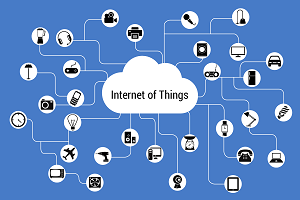The Internet of Things (IoT) is dominating headlines, though the stories swing between the benefits of using digitally connected devices and security concerns associated with them. As the Internet grows, the number of connected devices continues to rise every day, and this trend is not slowing down. Gartner predicts that more than 26 billion internet-connected devices will be installed globally by 2020; that is more than 4 devices for every human on earth. This entails an exponential increase in new security threats, as the growing number of IoT devices gives hackers and cyber criminals more entry points. Continue Reading
IOT
The Integration of Internet of Things into Everyday Life
In 1965 Gordon Moore, Co-Founder of Intel, made a prediction, he thought at the time would last 10 years. In reality his prediction has continue to ring true for last 50 years and is still going. Moore’s Law predicts the number of transistors that can fit on a silicon chip will double every two years as technology advances.1
At the time Moore made his prediction, color television was just emerging in the United States and you had to actually walk to the TV to turn the channel. Most homes had telephone service with a party line that was shared by multiple service subscribers. Personal computers would not become common for another 15-20 years. Continue Reading
Specifics of Effective GUI Development for Internet of Things
When we talk about the devices that make up the Internet of Things (IoT), what comes to your mind? Smartphones, wearables, light bulbs, refrigerators, thermostats, smoke sensors, infotainment systems – the list can be endless. These connected devices became an integral part of our daily lives and their number will continue to increase year after year, according to the experts’ forecasts.
As human interactions with connected devices become stronger, GUI developers face challenges each day when designing for IoT. Continue Reading



